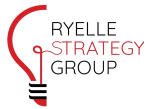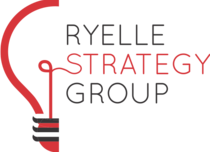The Role of Change Management Communication in Navigating Transformation
By: Ryelle Strategy Group
To paraphrase the Greek philosopher Heraclitus, in the fast-paced, ever-evolving landscape of the workplace, change is the only constant. Organizations are seeing the need to continuously evolve to meet new demands, adopt innovative technologies, and respond to shifting trends. However, these changes often come with their fair share of challenges.
The field of change management provides a structured approach to manage these changes, and within that approach lies change management communication. This is the means by which proposed changes are communicated to stakeholders to ensure success.
In this article, we will explore the role that change management communication plays, as well as the steps and best practices for creating a change communication plan.
The Communication of Change Management
It is a well-known fact that changing ways of working can disrupt established routines and create uncertainties among employees. Acknowledging these challenges that accompany organizational shifts is crucial.
To address this, change management functions as a structured process designed to guide organizations through these transitions smoothly. When executed effectively, change management safeguards employee morale, engagement, and productivity. At the heart of this process lies the communication of the change that is taking place.
Change management communication is the strategic delivery of information during a process of organizational transformation or change management. It involves crafting and delivering messaging that informs, engages and aligns all stakeholders with the upcoming changes.
Effective communication is a cornerstone of successful change management. It enables stakeholders to understand the reasons behind changes, their roles in the transition, and the benefits that will come as a result of the change. The idea is that including and informing stakeholders in the process through clear and transparent communication will mitigate resistance to change.
Creating a Change Management Communication Plan
- Assess the effects of the change: Understand the scope of change and consider its potential impact on various key stakeholder groups.
- Plan a communication strategy: Develop a full calendar of communications to ensure a consistent flow of information through every step of the change process.
- Select the appropriate channels for communication: Take a multi-channel approach to enable individuals to engage with the information via their preferred channel. This includes emails, team and 1-1 meetings, intranet, focus groups, lunch and learns, town halls, organization-wide events and more.
- Customize the message for various stakeholder groups: Tailor messaging to resonate with different stakeholders, highlighting how the change affects their roles/interests directly. The question of “What’s in it for me?” will be top of mind for stakeholders who are wondering how the change will affect them moving forward. It’s important that they are reassured.
- Identify preferred individuals to send communications: Consider who the communications should be coming from to earn stakeholders’ trust and engagement. Research has identified that employees want to hear high-level organizational messages from executive and senior leaders and look to immediate supervisors to understand how the change will impact individuals.
- Use feedback mechanisms to evaluate impact: Create channels for employees to ask questions, share concerns, and provide feedback. Continually assess whether the messaging you have crafted is effective or if it needs tweaking.
Best Practices for Effective Change Management Communication
In a world where change is constant, the art of managing organizational shifts becomes imperative for achieving success. Effective change management communication acts as a vital pillar in this journey. By establishing a clear, engaging, and consistent line of communication, organizations can ease the transition, gain employee buy-in and create positive feelings about the change.
Components of Effective Change Management Communication
- Rationale: Clearly communicate the reasons behind the change, emphasizing the benefits it brings to the organization, teams and individuals.
- Expectations: Outline what is expected from employees during the transition and how their roles might evolve.
- Timelines: Provide a roadmap of the change process, indicating milestones and timelines for different phases.
- Support: Offer resources and support for stakeholders to navigate the changes smoothly, including training and guidance.
Position Your Change Management Journey for Success
At Ryelle, we recognize the pivotal role of change management communication in the success of any significant organizational change. Our integrated approach combines strategic planning, employee engagement, and communication development support to guide organizations through seamless transitions. With our turnkey services, we ensure that your change management journey is not only effective but also empowering for your teams.
Reach out to us today to embark on a transformation journey that leverages the power of effective change management communication.


